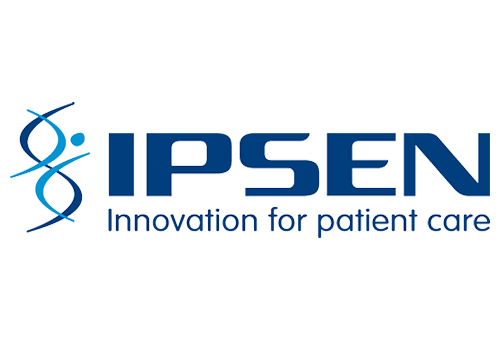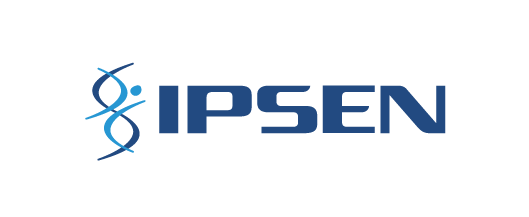With this approval, DYSPORT THERAPEUTIC now has the broadest label of all approved botulinum neurotoxins for spasticity, which includes both upper and lower limb spasticity in adults, as well as lower limb in children
MISSISSAUGA, ON (Canada), March 15, 2018 – Ipsen Biopharmaceuticals Canada
Inc., the Canadian affiliate of Ipsen (Euronext: IPN; ADR: IPSEY), today announced that Health Canada has approved DYSPORT THERAPEUTIC™ (abobotulinumtoxinA) for the symptomatic treatment of focal spasticity affecting the lower limbs in adults.
“The Health Canada approval represents an important milestone for our company.
DYSPORT THERAPEUTIC now has the broadest spasticity label in Canada among the botulinum neurotoxins, which are critical in managing disabling motor disorders,” said Paul Reider, General Manager for Ipsen Biopharmaceuticals Canada Inc. “The approved indications of adult upper and lower limb spasticity and pediatric lower limb spasticity underscore Ipsen’s commitment to patients and the motor disorders community at large.”
DYSPORT THERAPEUTIC allows contracted muscles to relax by blocking overactive nerve signals. Patients who were treated with the total DYSPORT THERAPEUTIC dose, which was injected intramuscularly into the gastrocnemius and soleus muscles located in the calf and at least one additional lower limb muscle, showed statistically significant improvement in muscle tone and spasticity at the ankle joint versus placebo.1,2
“In addition to rehabilitation, botulinum neurotoxin medication represents an important intervention in helping patients impacted by lower limb spasticity move towards improving their function and ultimately their quality-of-life,” said Dr. Theodore Wein, Assistant
Professor of Neurology and Neurosurgery, Stroke Prevention Clinic, Montreal
General Hospital, Montreal, Quebec. “Now that DYSPORT THERAPEUTIC is approved for the treatment of patients with spasticity in the upper or lower limbs, it represents a valuable treatment option to help them improve their lives.”
About Spasticity
Spasticity is a condition in which there is an abnormal increase in muscle tone or stiffness in one or more muscles, which may interfere with movement and impair activities of daily living.3 Spasticity is usually caused by damage to nerve pathways in the brain or spinal cord that control muscle movement, and may occur in association with cerebral palsy, spinal cord injury, multiple sclerosis, stroke, and brain or head trauma.3
Lower limb spasticity commonly involves spasticity in the gastrocnemius and soleus muscle complex located in the calf.4,5 These calf muscles, during walking, work to raise the heel from the ground.3 Symptoms of spasticity may include increased muscle tone, rapid muscle contractions, exaggerated deep tendon reflexes, and/or muscle spasms. The degree of spasticity can vary from mild muscle stiffness to severe, painful, and uncontrollable muscle spasms.3
“Unfortunately, many stroke survivors are impacted by spasticity which can make it very difficult, and sometimes next to impossible, to perform everyday tasks,” said Mary Lynne
Stewart, National Director, Fund Development and Communications, March of Dimes Canada. “Because botulinum neurotoxins can be a mainstay of treatment for these patients and others affected by spasticity, having a new option like DYSPORT THERAPEUTIC is critical, since each individual responds to medication in a different way.”
“Recognizing that lower limb spasticity can be very debilitating for individuals with cerebral palsy, treatment interventions like DYSPORT THERAPEUTIC are very beneficial as they can help adult patients live with the least amount of restriction and improve mobility,” said Janice Bushfield, Executive Director, Cerebral Palsy Association in Alberta, Calgary, Alberta. “We also believe that the cornerstone of individualized care is ensuring that treatment choices are not only approved, but are made available.”
About the Phase III Study
Regulatory approval of DYSPORT THERAPEUTIC for the treatment of lower limb spasticity in adults was evaluated in a prospective, Phase III, randomized, multicentre, double-blind, placebo-controlled study that included 385 patients (255 DYSPORT THERAPEUTIC and 130 placebo) with lower limb spasticity, and in its open label extension study.1,2 Patients had lower limb spasticity (Modified Ashworth Scale (MAS) toxin injection in the affected lower limb) and were at least 6 months post-stroke or posttraumatic brain injury.1,2
Patients were randomized to DYSPORT THERAPEUTIC 1,000 Units (N=125), DYSPORT THERAPEUTIC 1,500 Units (N=128) or placebo (N=128) injected intramuscularly into the gastrocnemius-soleus muscle complex (GSC) located in the calf.1,2 At least one other lower limb muscle was injected, according to the clinical presentation.1,2
The primary efficacy variable was muscle tone assessed by the MAS at the ankle joint
(with the knee extended) at week 4.1,2 Mean changes in MAS GSC from baseline at week 4 were -0.5 in the placebo group, -0.6 in the DYSPORT THERAPEUTIC 1,000 Units group and -0.8 in the DYSPORT THERAPEUTIC 1,500 Units group.1,2
The study concluded that DYSPORT THERAPEUTIC 1,500 Units injection resulted in a statistically significant improvement in muscle tone and spasticity at the ankle joint at week four.1,2 The duration of response for the majority of patients within the study was between 12-16 weeks.1,2 In this study, some patients experienced a longer duration of response.1,2
On completion of the study, 352 patients entered an open-label extension study in which retreatment with DYSPORT THERAPEUTIC 1,000 Units or 1,500 Units was determined by clinical need.1,2 DYSPORT THERAPEUTIC was effective and well tolerated in the repeated treatments in patients with lower limb spasticity.1,2
The most commonly observed adverse reactions across the studies (≥ 2% in any DYSPORT THERAPEUTIC dose group and more than placebo) were: falls, muscular weakness, and myalgia (muscle pain).1,2
The full Product Monograph for Canada is available here.
About DYSPORT THERAPEUTIC (abobotulinumtoxinA)
DYSPORT THERAPEUTIC is an injectable form of botulinum toxin type A (BoNT-A), which is isolated and purified from Clostridium bacteria producing BoNT-A. It is supplied as a lyophilized powder.1
About Ipsen
Ipsen is a global specialty-driven biopharmaceutical group focused on innovation and specialty care. The group develops and commercializes innovative medicines in three key therapeutic areas – Oncology, Neurosciences and Rare Diseases. Its commitment to oncology is exemplified through its growing portfolio of key therapies for prostate cancer, neuroendocrine tumors, renal cell carcinoma and pancreatic cancer. Ipsen also has a well-established Consumer Healthcare business. With total sales over €1.9 billion in 2017, Ipsen sells more than 20 drugs in over 115 countries, with a direct commercial presence in more than 30 countries. Ipsen’s R&D is focused on its innovative and differentiated technological platforms located in the heart of the leading biotechnological and life sciences hubs (Paris-Saclay, France; Oxford, UK; Cambridge, US). The Group has about 5,400 employees worldwide. Ipsen is listed in Paris (Euronext: IPN) and in the United States through a Sponsored Level I American Depositary Receipt program (ADR: IPSEY). For more information on Ipsen, visit www.ipsen.com.
About Ipsen Biopharmaceuticals Canada Inc.
Ipsen Biopharmaceuticals Canada Inc., the Canadian affiliate of Ipsen, is headquartered in Mississauga, Ontario with established operations since October 2015. For more information on Ipsen Biopharmaceuticals Canada Inc., or to obtain full prescribing information for DYSPORT THERAPEUTIC, visit www.ipsen.ca.
DYSPORT THERAPEUTIC is a trademark of IPSEN BIOPHARM LTD.
For more information, please contact:
Stephanie Ronson Cohn & Wolfe
stephanie.ronson@cohnwolfe.ca
(416) 924-5700 ext. 4015
# # #
References
- DYSPORT THERAPEUTIC (abobotulinumtoxinA) Canadian product monograph. http://ipsen.ca/wpcontent/uploads/2018/03/Dysport-Therapeutic-Product-Monograph.pdf.pdf.
- Gracies J-M, Esquenazi A, Brashear A et al. Efficacy and safety of abobotulinumtoxinA in spastic lower limb. Randomized trial and extension. Neurology. 2017;89:2245-2253.
- National Institute of Neurological Disorders and Stroke. Spasticity Information Page. https://www.ninds.nih.gov/Disorders/All-Disorders/Spasticity-Information-Page. Accessed February 6, 2018.
- Gray H. Anatomy of the Human Body. “The Muscles and Fasciae of the Leg.” http://www.bartleby.com/107/129.html. Accessed February 8, 2018.
- Delgado, M., Tilton A, Russman B, et al. AbobotulinumtoxinA for Equinus Food Deformity in Cerebral Palsy: A Randomized Controlled Trial. Pediatrics. 2016; 137 (2); e20152830.




